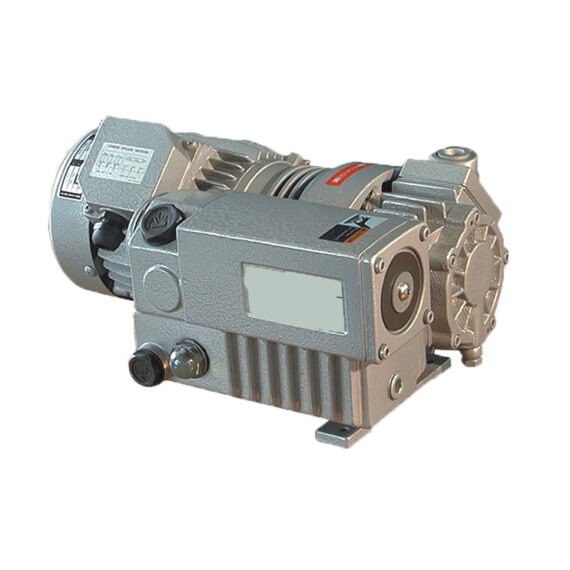
Coating, Deposition, and Metallizing
The atomization and uniform distribution of a material over another to impart an outermost layer that exhibits the desired physical or chemical properties.
Vacuum coating is an umbrella term that is defined as the method of applying thin films or coatings to various substrates under vacuum conditions. As opposed to traditional coating methods, vacuum coatings have better adhesion and uniformity with fewer defects. When compared to methods such as solvent coating, which involves immersing the coating material into solvent to liquefy it and make it easier to apply, vacuum coating can be more operationally and environmentally friendly.
To yield a proper vacuum-coated product, the substrate is cleaned and prepared. This includes sanding, grinding, brushing, and scrubbing. Further cleaning steps may be taken involving chemical, ultrasonic, rinsing, or low-pressure plasma apparatus. After preparation, the substrate is clean from dirt and debris; its surface is smooth and ready to be coated.
Among the vacuum coating methods, deposition is a specific category encompassing the processes by which thin films of material are deposited onto substrates in vacuum.
Deposition can be divided into two general categories: chemical vapor deposition and physical vapor deposition. The difference between the two is the method by which vapor is created; PVD uses physical manipulations like phase shifting to create the vapor for deposition while CVD uses chemical reactions. Both categories encompass numerous unique methods of deposition, such as spin coating, dip coating, doctor blade, metered rod, slot-casting, spray coating, screen printing, inkjet printing, aerosol jet, thermal evaporation, pulsed laser, sputtering, and electron gun.
There is no specific technique that exclusively captures vacuum deposition, as many of the methods make use of negative pressure. Vacuum deposition encompasses all of the deposition methods that make use of sub-atmospheric conditions to facilitate the depositing process. Many of the physical methods use evaporation as the mechanism by which the material can be deposited. Using vacuum in the deposition chambers lowers the boiling point of the depositing material, facilitating the evaporating step of the deposition process.
Most forms of evaporative deposition require a vacuum pump in order to lower the pressure enough to evaporate some of the depositing material onto the substrate. This is done through a heating element in the chamber, which evaporates the material in the negative pressure, causing it to rise up to where the substrate has been positioned.
Vacuum metallizing is a further subcategory of vacuum deposition that imparts metallic coatings onto substrates such as plastics and ceramics to impart marketable characteristics such as aesthetic appeal or corrosion resistance.
In addition to vacuum coating, the product can be produced using compression. Compressive coating methods like thermal spraying or cold spraying exhibit more versatility in material handling and finer control of coating thickness.
Many compression methods do not require melting the coating. This allows for the use of certain polymers and ceramics that degrade under high heat. The benefit of vacuum is that melting the coating becomes feasible at lower temperatures, but methods such as cold spraying do not require any melting at all. In addition, the use of a compressor allows for powder coating, which is typically more difficult to process in a vacuum coating system.
Vacuum coating requires precise control of temperature, gas flow, vacuum level, and deposition rates. When including the potential for particulate contaminants and moisture to be processed, these considerations make vacuum system design much more complex. Compressive coating techniques rely on feed rates and material flow rates to adjust thickness, making adjustment much simpler to attain.
Both are incredibly useful, thus the selection of the particular technique to be employed is heavily dependent on the particular product that is being manufactured.
View our Products
NRV Series
An oil-circulated rotary vane vacuum pump is used as a roughing pump for an ultrahigh vacuum pump like an oil diffusion pump to evacuate the deposition chamber for vacuum deposition. Operating such a deep vacuum generating apparatus on its own without a roughing pump will cause it to require maintenance, repair, or replacement at an accelerated rate. Maintenance and repair are more difficult because of the complex design of the diffusion pump. Overexerting the ultrahigh vacuum pump or increasing its operating time will result in more frequent repair or replacement. The rotary vane vacuum pump, contrary to the ultrahigh vacuum pumps, is very simple in design with few moving parts. It is extremely simple to maintain and repair. If it needs replacement, it is of little issue, as rotary vane vacuum pumps have long been one of the most inexpensive pumps on the market. NES Company Inc. offers the robust and reliable NRV Series single stage oil-circulated rotary vane vacuum pumps, as well as accessory kits and spare parts kits for a smooth repair process. The accessory kits are selected for specialization to be tailor-made for intended use in the industry.
NSP Series
For medium-sized production coating processes that require deep levels of vacuum, NES Company Inc. offers the NSP Series dry screw vacuum pumps. As a standalone unit, they are able to reach high levels of vacuum through extremely energy-efficient means thanks to the meticulous design brought about only recently in the vacuum world. This means that without any forepump or backing pump, the NSP Series is able to provide all of the suction and vacuum that is required of these deposition processes.


